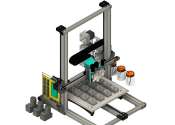Battery technology achieves record high sodium-metal cycling rates
While lithium-ion batteries currently dominate the industry, serious concern remains about the limited availability of lithium used in these batteries. Conversely, sodium-ion batteries provide a more sustainable alternative ...
Dec 20, 2023
0
71









